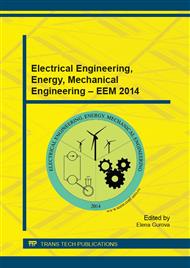[1]
Bozidar Liscic, Hans M. Tensi, Lauralice C.F. Canale, George E. Totten, Quenching Theory and Technology, second ed. CRC Press, (2011).
DOI: 10.1201/9781420009163
Google Scholar
[2]
P.I. Yascheritsyn, E.V. Ryzhov, V.I. Averchenko, Technological heredity in mechanical engineering, Minsk, Science and Technology, (1977).
Google Scholar
[3]
G.A. Rastorgouev, Features of technological inheritance in engineering production. Handbook, The application of engineering journal, 9 (2013) 8-17.
Google Scholar
[4]
O. I Drachyov, A.O. Drachyov, V.A. Taranenko, Increasing the accuracy and stability of the forms of non-rigid axisymmetric parts by a heat treatment, (2014).
Google Scholar
[5]
Panov A.A., Machining: a handbook, Moskow, Mechanical Engineering, (2004).
Google Scholar
[6]
G.A. Kharlamov, A.S. Tarapanov, Allowances for mechanical treatment: A Handbook, Moscow, Mechanical Engineering, (2006).
Google Scholar
[7]
G.N. Kulik, Example of selecting the blank with the influence of technological heredity, Metal processing, 1 (2011) 50-52.
Google Scholar
[8]
V.V. Margins, G.G. Krushenko, Calculation of allowances for machining taking into account technological heredity, Metal Technology, 4 (2010) 38-41.
Google Scholar
[9]
G.N. Kulik, The technological heredity. Metal processing, 1 (2011) 49.
Google Scholar
[10]
N.V. Kurlaev, A.S. Bachurin, A. Yu. Slyunyaev, Estimation accuracy of the solution of unsteady thermal problems and the calculation of the quenching process with gradual immersion in quenching environment using finite element method, Science. Industry. Defense, Novosibirsk (2012).
Google Scholar


